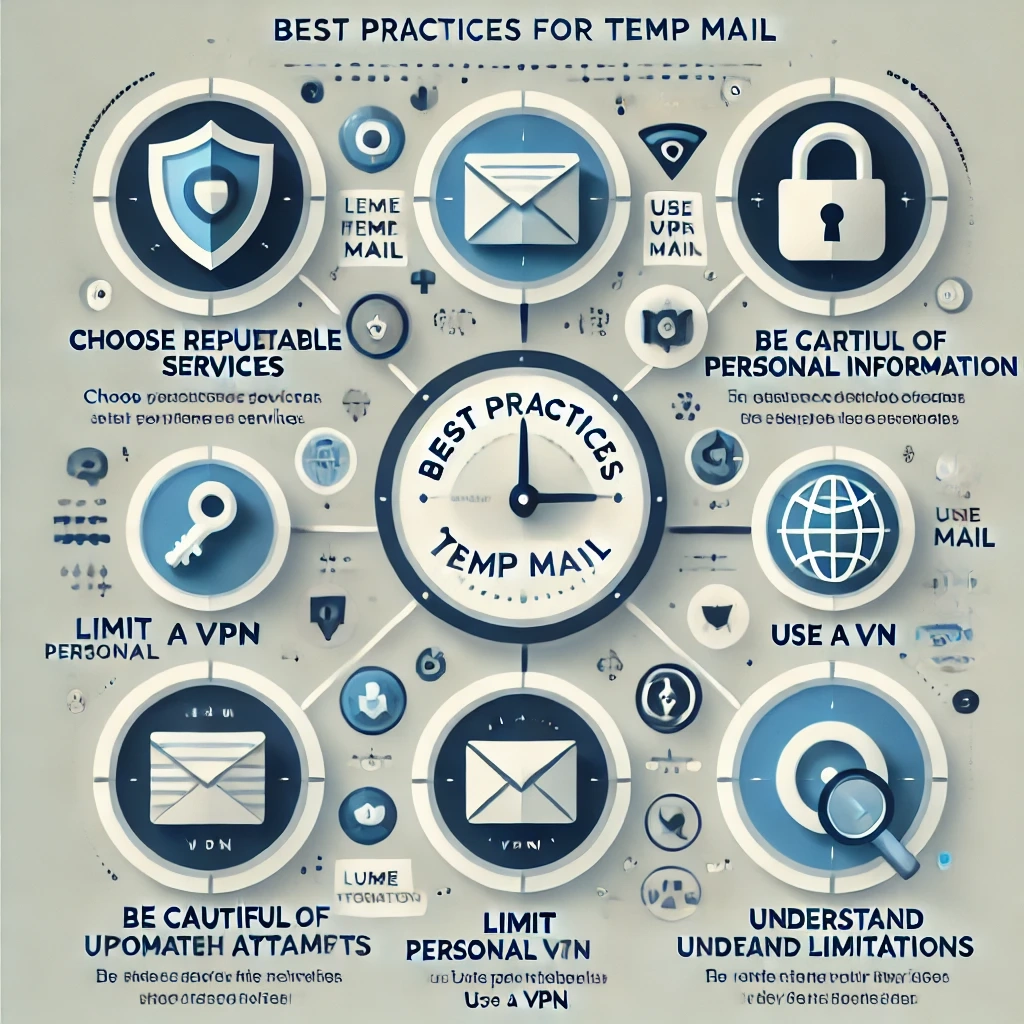Why Choose Temp Mail?
Why Choose Temp Mail?
Learn about temp mail services. But fear not, as these great tools are here to help protect your privacy and stop spam while staying anonymous online. How temp mail works, and the Temp Mail, 10 Minute Mail, and Guerrilla Mail options.
Privacy: A Paramount Concern in the Digital Age Using temporary email addresses is one of the best ways to protect your personal information. They are an extra layer of privacy, stopping potential spammers and marketers from following you around the Internet and even smarter AIs.
Why Choose Temp Mail?
Protect your Privacy: No spam, phishing attempts, and unwanted marketing emails.
Maintaining Anonymity On The Internet:
Limited Exposure Keep your main email address out of harm’s way.
37 Temporary: Best for one-off registrations or downloads
Email Address: On web pages, use temp mail to validate accounts.
How Temp Mail Works
Temp mail offers unique random email services that are constantly changing. This makes it hard for tracking systems to detect a consistent pattern, or associate an activity with a particular user. Most temp mail services give added privacy features for example self-destruction timers and IP address masking see here.
Popular Temp Mail Services
Temp Mail: A very easy to use and straightforward service with a variety of temporary email addresses.
Temporary secure email service for 10 minutes.
Guerrilla Mail: “Free, on-demand, disposable email address for 1 hour.
Mailinator: Has an extensive list of disposable email addresses and domains.
Well, it is ProtonMail: It is a secure and privacy-respecting email service that provides temporary emails as well.
How to Make the Most out of WordPress SMS Plugin
Custom Email Addresses: Some temporary email providers offer the feature of customizing your email address to enhance anonymity.
Self-Destruct Timers: Set a destruction timer on your temporary email address so that it self-destructs and is deleted after a certain time period.
IP Address Masking — When you need extra privacy, you can hide your IP address.
Use With VPN: For added security use your temp mail with a VPN.
25: File AttachmentsOkay, Some of the temp mail services also let you send and receive file attachments.ОK,
Temp Mail Services with Mobile Apps: A lot of temp mail services have mobile apps that make the service usable at any time.
Temp Mail: Important Information and Best Practices
Use Trusted Services: Stick to reputable temp mail providers with a solid reputation for privacy.
Do not share sensitive personal information with temporary email addresses for its protection.
Never Enter Personal Data on a Unverified Page: When prompted to enter sensitive information, ensure you are on a legitimate website and not a phishing page.
Combine with VPN: Using a VPN along with temp mail service adds an extra layer of privacy and security.
In other words, keep your temp mail accounts updated and refresh them often to cover your tracks.
Know the drawbacks: Temp mail services can have restrictions on storage, attachment size, or frequency of use.

Real-World Use Cases
Online Shopping: temp mail to use to prevent spam from e-retailers.
Forum Sign-Ups: Use disposable email services when you need to sign up for forums or communities without disclosing your main email.
Download Files: Get files from websites that need email signup without compromising your identity.
Testing Services: Test out new services or websites without signing up for a long-term account.
Spam Prevention Tip: This is the process of using temp mail to reduce email spam in your inbox.
Conclusion
Temp mail service is a great way to secure your privacy online while getting rid of junk mails. Learn how they work and follow best practices to protect yourself against tracking and surveillance. Temp mail addresses are a powerful request to receive mail without revealing the real address.
